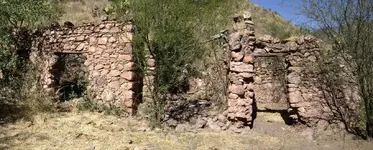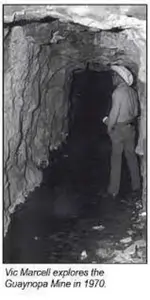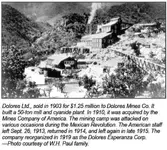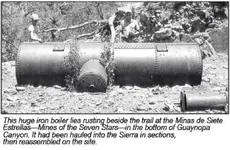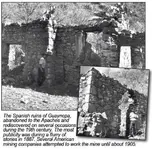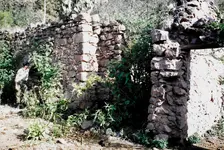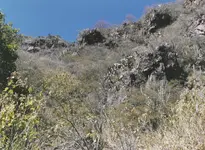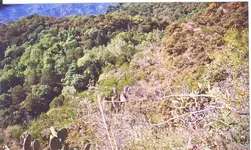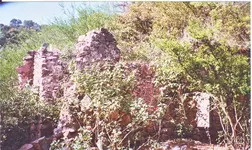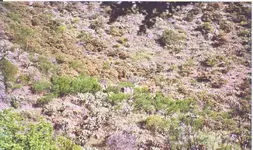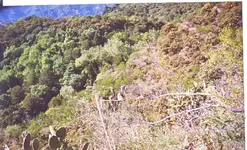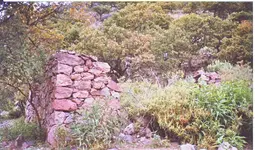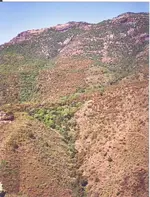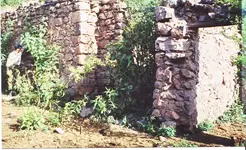Old Bookaroo
Silver Member
- #1
Thread Owner
Lost Mines of Arizona and Sonora.
-------
[Dan De Quille in the Mining Industry.]
Almost every mining region on the Pacific Coast has its “lost mines” legends. In Nevada, California, Arizona, Colorado, Montana, Idaho — everywhere — we find stories of lost mines. The lost mines, whether of gold or silver, are always represented as being immensely rich. Down in Arizona and New Mexico the lost mines are usually those of silver, while in California and elsewhere they are principally mines of gold. The stories connected with many of the lost mines, as the Breyfogle, Gunsight, Peg Leg and Lost Cabin, are too well known to be repeated here. First and last much money has been expended in searching for one and another of these lost mines. Many expeditions have been fitted out, and often great hardships have been endured. In not a few instances lives have been lost in these searches.-------
[Dan De Quille in the Mining Industry.]
The great region of lost mines as well as of mines that have never been found, is that of Arizona, New Mexico, and indeed all the way down through Central and South America. It is also a region of lost treasure in the shape of hidden hoards of gold — indeed, down that way there are even lost cities and towns. John I. Ginn, an old newspaper man of the Comstock, spent much time in search of the lost mining town of Guaynopa, supposed to be somewhere in the Sierra Madre mountains, but he never was able to penetrate to where the old town was said to be situated. Hundreds of men have lost their lives while trying to find it.
Almost three years ago this lost city was said to have been found by Louis Proto, a French American miner and prospector. Proto says the old ruins are in the Sierra Madre, in the very heart of the Apache country. He went out alone and prowled through the mountains Indian fashion till he found the remains of the old town. He found the ruins of buildings, furnaces, arrastras and a stone church through the floor of which large trees were growing. The whole of the people of Guaynopa were massacred by the Apaches over 200 years ago, and finally even knowledge of its site was lost.
Proto returned to la Trinidad, Sonora, the place whence he set out, with his pack mule loaded with the richest ores of gold and silver seen in that place. The ores were considered good evidence that he told the truth about his discovery. Proto not only saw plenty of rich silver ore in the old tunnels about the ruins, but also rich gold quartz and placer diggings. He stated that the ruins indicated a town of about 1500 in habitants.
Two years ago a party of Sonoraians [sic], headed by one Pedro Encines, came up into Arizona in search of a silver mine described as a “mountain of silver ore.” The mine had been found years before by a “compadre” whose age and bodily infirmity prevented him returning to look up the treasure which he thought might now be taken possession of under the protection of U.S. troops. The party of searchers were provided with letters from the governor of Sonora and other Mexican officials. These documents they presented to Capt. J.L. Bullis, acting Indian agent at San Carlos, and were granted permission to search for the silver mountain, but with the proviso that should it be found to be on the reservation the exploration was to end at once.
On these terms the Sonoraians set out, having with them as guide an old man who had been a companion of the discoverer of the silver mountain, which lay in the vicinity of Fort Apache. After several days travel the party came in sight of a mountain which the guide pointed out as that in which lay the many veins of native silver. It has been hoped that the mountain would be found beyond the northern boundary of the White mountain reservation, but to the great disappointment of the party it was found to lie several miles south within the lines of the reservation. Respecting their promise to Agent Bullis the party turned back when the fortune they had some several hundred miles to seek was almost within their grasp. At the point where they tuned back they found a prospectors[‘] camp in which three men had been killed by the Indians and their bodies burned in their camp fire, where were found their bones and the remains of three saddles and a sack of corn. Three empty cartridge belts were found.
Mojave County Miner [Needles, Cal. and Kingman, Arizona] 15 August 1896 (Vol. XIV. No 42.]
----- o0o -----
Editor’s Notes:
“Dan De Quille” (sometimes spelled “DeQuille”) was the pen name of William Wright (1829-1898), a newspaper man who spent three decades writing for and editing Virginia City’s (Territorial) Enterprise. An unsuccessful prospector and miner, he hired Samuel Clemens, who had also failed to find his fortune in the mountains of California and Nevada. Wright is best known today as the author of The History of the Big Bonanza (1876). The “Lords of the Comstock” asked him to write the story of the Silver State’s fabulous lode. “Mark Twain” encouraged Wright to take the job, and he contributed the introduction.
Mountain of Silver — This may be the famous “Sierra Azul.” For a comprehensive history of that fabulous mine, see “The Legend of Sierra Azul; With Special Emphasis Upon the Part it Played in the Reconquest of New Mexico” by José Manual Espinosa, New Mexico Historical Review, April 1934 (Vol. IX, No. 2).
----- o0o -----
Good luck to all,
The Old Bookaroo



